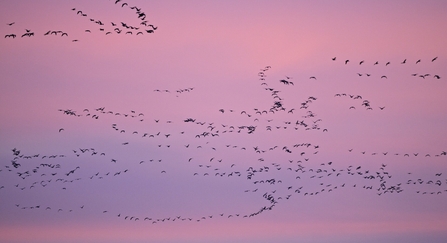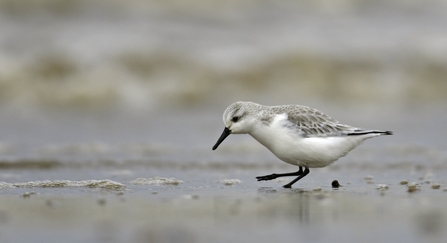Our Planning and Advocacy Manager, Mike Jones, will speak at the event in defense of this vital wild landscape and highlight its importance on a local, national and global scale for wildlife and people.
Despite more than three years of speculation, there are still significant concerns people are being kept in the dark about Centre Port's tidal barrier project, including the catastrophic effects such a development would have on wildlife and people.
Conservation organisations and local businesses including us at NWT, Lincolnshire Wildlife Trust, Wildfowl and Wetlands Trust, RSPB and Wild Ken Hill are frustrated by the lack of transparency from the developer. The Centre Port chief is expected to face fierce opposition from scientists, conservation charities and community members as they prepare ahead of a meeting at the Princess Theatre in Hunstanton.
James Sutcliffe, CEO of Centre Port Ltd, is expected to give an update at the meeting on his ideas for an enormous tidal barrier on The Wash, which are believed to involve building a deep-sea container port on the cherished estuary. Community members have previously asked him to explain the plans, but have had only 'vague' statements about the future of The Wash and a lack of transparency from the developer.
Wild Ken Hill founder, Dominic Buscall, said: "I publicly debated this issue with Mr Sutcliffe in May. Aside from the widespread opposition to the idea, one of the notable features from that evening was the complete lack of information on his ideas. Six months later and that continues to be the case. It is now time to put this whole proposal to bed."


